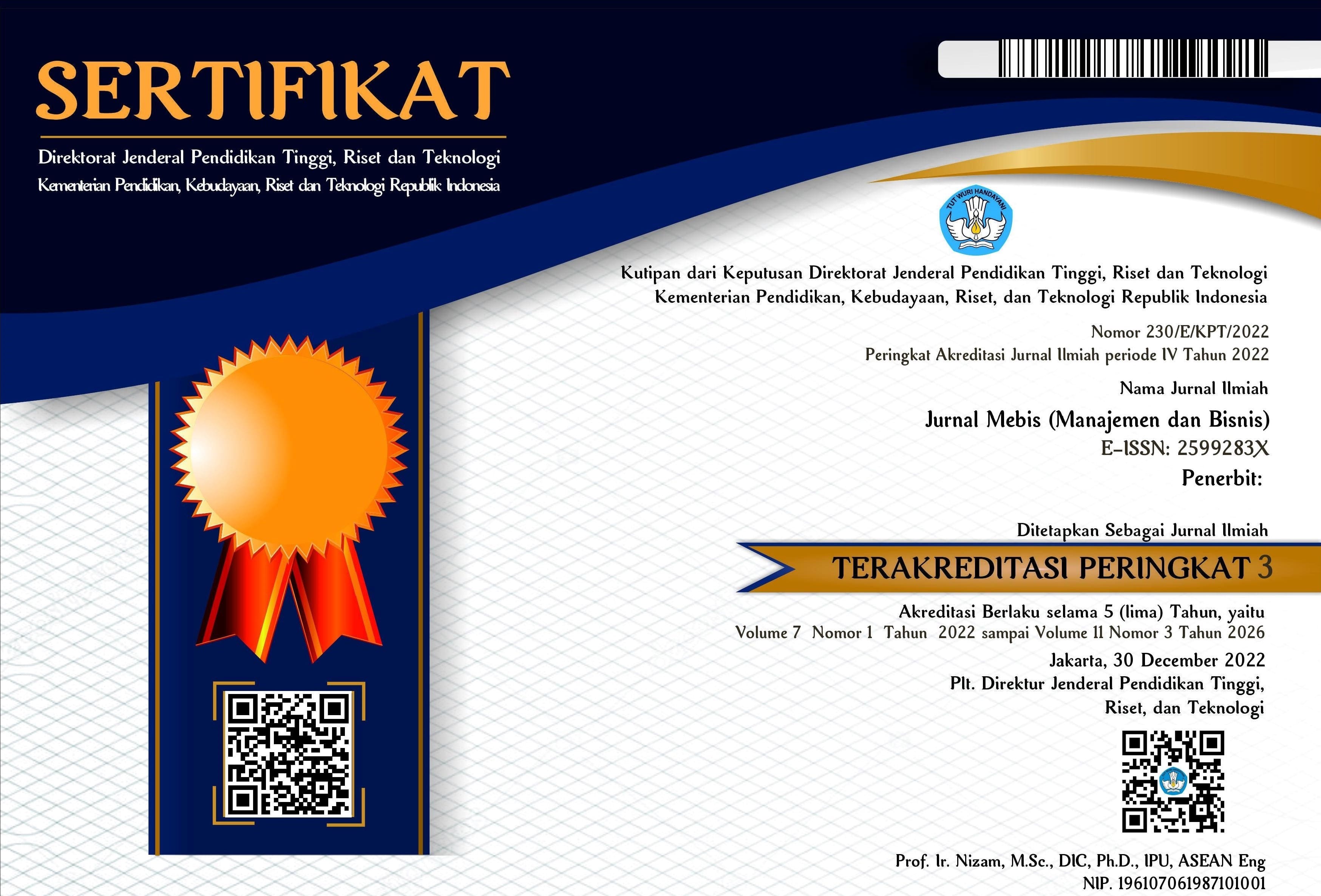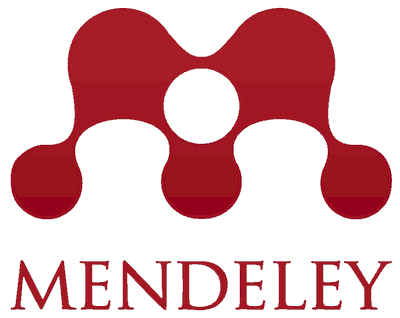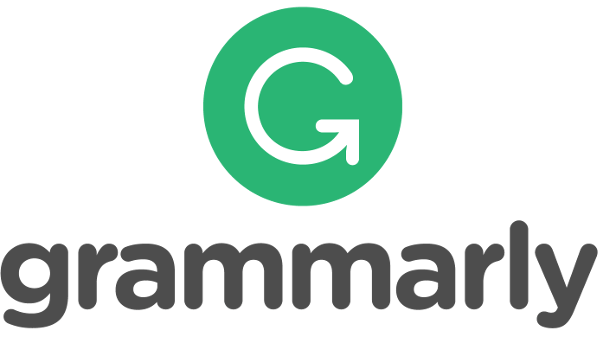Consumer’s Satisfaction and Employee’s Job Satisfaction
DOI:
https://doi.org/10.33005/mebis.v10i1.679Keywords:
Employee’s Commitment, Employee’s Job Satisfaction, Consumer’s Satisfaction, Repurchase Buying PerformanceAbstract
The employee’s job satisfaction and consumer’s satisfaction with fairness or equability is a topic needed by any organization, including a profit-oriented organization, because it influences organizational performance. This research aims to figure out the influence of employees’ job satisfaction and consumers’ satisfaction with fairness or equability on organization performance. Theoretically, the job satisfaction variable serves as an organizational performance variable, as job satisfaction leads to high dedication to organizational performance. This research uses doctors and nurses as research respondents. The analysis result discussed
Downloads
References
Allard, A., & Cova, F. (2020). Equality beyond needs‐satisfaction: an empirical investigation. Journal of Applied Philosophy, 37(2), 273–298. https://doi.org/10.1111/japp.12388
Bergel, M., Frank, P., & Brock, C. (2019). The role of customer engagement facets on the formation of attitude, loyalty and price perception. Journal of Services Marketing, 33(7), 890–903. https://doi.org/10.1108/JSM-01-2019-0024
Cesário, F., & Chambel, M. J. (2017). Linking organizational commitment and work engagement to employee performance. Knowledge and Process Management, 24(2), 152–158. https://doi.org/10.1002/kpm.1542
D’Oria, L., Crook, T. R., Ketchen, D. J., Sirmon, D. G., & Wright, M. (2021). The evolution of resource-based inquiry: a review and meta-analytic integration of the strategic resources–actions–performance pathway. Journal of Management, 47(6), 1383–1429. https://doi.org/10.1177/0149206321994182
Espinoza, S. G. R., Ocampo, P. S., & Ángel, C. E. M. del. (2024). The development of disruptive organizations and technologies. Journal of Ecohumanism, 3(8). https://doi.org/10.62754/joe.v3i8.6589
Fleckinger, P., Martimort, D., & Roux, N. (2024). Should they compete or should they cooperate? the view of agency theory. Journal of Economic Literature, 62(4), 1589–1646. https://doi.org/10.1257/jel.20241678
Gallie, D., Felstead, A., Green, F., & Henseke, G. (2021). Inequality at work and employees’ perceptions of organisational fairness. Industrial Relations Journal, 52(6), 550–568. https://doi.org/10.1111/irj.12346
Garcia‐Rada, X., Kim, T., & Liu, P. J. (2025). Consumption sacrifice. Journal of Consumer Psychology, 35(1), 61–80. https://doi.org/10.1002/jcpy.1404
Gunaltay, A., & Filiz, U. (2021). Human resources challenges for the next 10 years: case study of Turkey. Journal of Management, 37(1), 9–17. https://doi.org/10.38104/vadyba.2021.1.01
Joo, J., & Hong, S. (2025). Predicting model for the employees’ organizational commitment: Integrative approach of organizational identity and career identity. International Journal of Organizational Analysis. https://doi.org/10.1108/IJOA-07-2024-4662
Krajcsák, Z. (2021). Solving intra-group conflicts by supporting employees’ identification and commitment. International Journal of Organizational Analysis, 29(4), 1030–1043. https://doi.org/10.1108/IJOA-04-2020-2138
Maddison, S. (2017). Can we reconcile? Understanding the multi-level challenges of conflict transformation. International Political Science Review, 38(2), 155–168. https://doi.org/10.1177/0192512115607953
Moseley, F. (2015). The marginal productivity theory of capital in intermediate microeconomics textbooks. Review of Radical Political Economics, 47(2), 292–308. https://doi.org/10.1177/0486613414557919
Nunnally, J. C. (1978). Psychometric Theory (2nd ed.). New York: McGraw-Hill.
Ovdiuk, O. (2019). The impact of scientific management organization school on the formation of the theory of management decisions. Scientific Horizons, 79(6), 82–87. https://doi.org/10.33249/2663-2144-2019-78-5-82-87
Ramasamy, A., Inore, I., Muduli, K., & Singh, S. (2023). Evaluation of factors affecting job satisfaction pathways for improved sustainable business performance in emerging economies. International Journal of Social Ecology and Sustainable Development, 14(1), 1–17. https://doi.org/10.4018/IJSESD.328217
Rastogi, M., Nanda, S., & Kumar, V. (2023). Roles of customer and employee satisfaction on corporate performance: An empirical investigation. Multidisciplinary Science Journal, 5, 2023ss0305. https://doi.org/10.31893/multiscience.2023ss0305
Roca-Puig, V. (2020). The symbiotic bond of income equality and organizational Equilibrium. Sustainability, 12(21), 9267. https://doi.org/10.3390/su12219267
Sungu, L. J., Weng, Q. (Derek), & Kitule, J. A. (2019). When organizational support yields both performance and satisfaction. Personnel Review, 48(6), 1410–1428. https://doi.org/10.1108/PR-10-2018-0402
Voss, G. B., Godfrey, A., & Seiders, K. (2010). How complementarity and substitution alter the customer satisfaction–repurchase link. Journal of Marketing, 74(6), 111–127. https://doi.org/10.1509/jmkg.74.6.111
Ye, J., & King, J. (2016). Managing the downside effect of a productivity orientation. Journal of Services Marketing, 30(2), 238–254. https://doi.org/10.1108/JSM-10-2014-0351.












